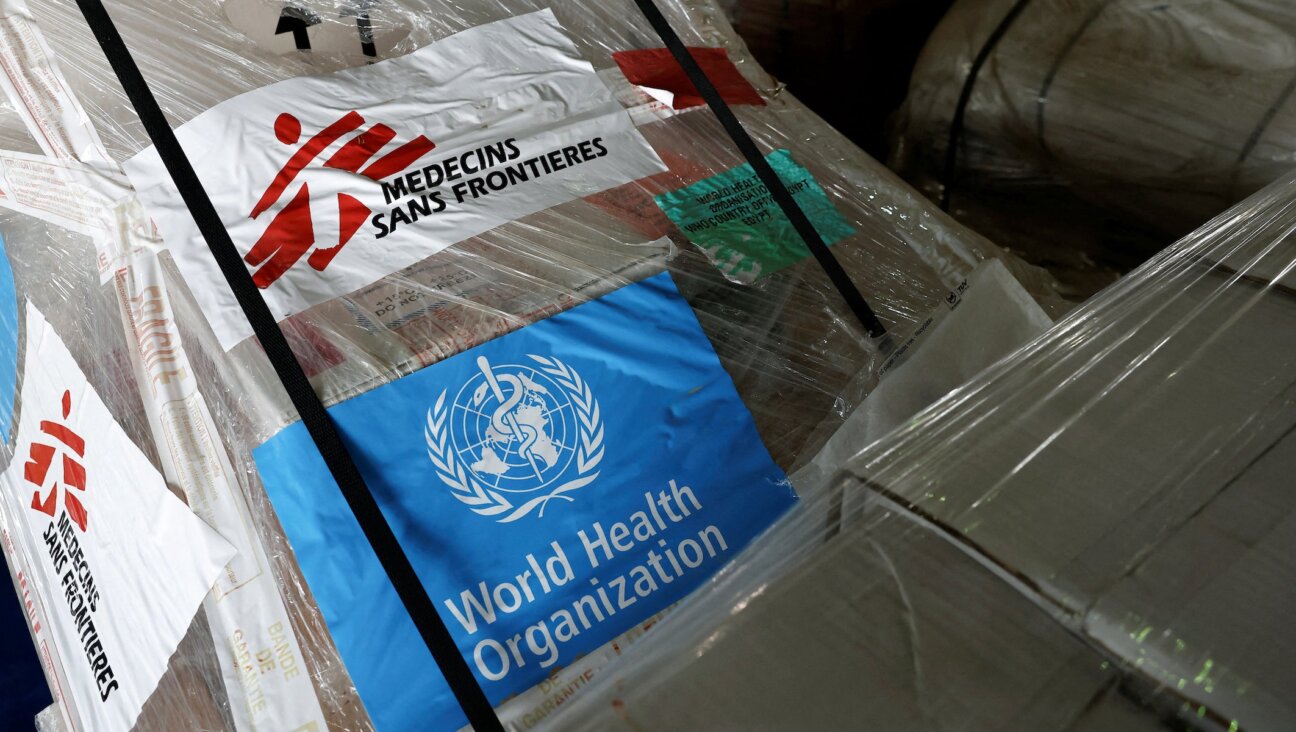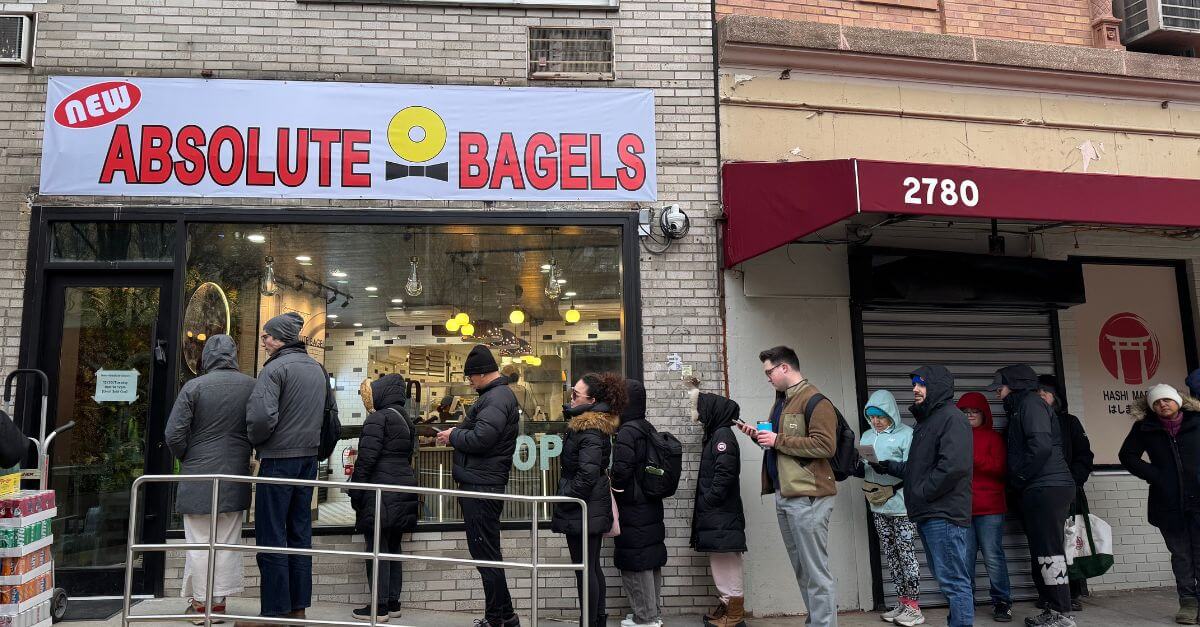How a wildflower became a symbol for Israel’s Memorial Day
In the decades since poet Haim Gouri alluded to it in 1948, the local flower known as Maccabees’ blood has become so associated with mourning the fallen that it is now cultivated to send to bereaved families

A field of wild red anemone flowers in southern Israel. Photo by iStock
This article originally appeared on Haaretz, and was reprinted here with permission. Sign up here to get Haaretz’s free Daily Brief newsletter delivered to your inbox.
One of the most distinctive symbols of Israel’s Memorial Day is a sticker with the word yizkor, set against a background of clouds and a bold, red flower, its buds like clusters of red bubbles reminiscent of drops of blood.
The Defense Ministry hands out these stickers in schools every year, as the ideal bereavement accessory that stands out particularly well on a white shirt (efforts to get the remnants out of clean laundry notwithstanding). Whereas most Memorial Day customs derive from the Diaspora – including a moment of silence and the donning of a red flower on the lapel – using a local, rare flower is unique.
Flowers, with their glorious transience, are associated with death and remembrance in many cultures. In Greek mythology, for example, when Adonis, the human lover of Aphrodite, is killed in a hunting accident, she holds him in her arms while his blood mixes with her tears. Everywhere a drop falls on the ground, a red anemone flower blooms.
During World War I, the red poppy became the symbol of fallen youth. In the spring of 1915, huge fields of poppies bloomed in the fields and forests of northern France and Belgium, which were destroyed in the many battles that took place there. Inspired by the incredible sea of red flowers, a Canadian doctor, Lt. Col. John McCrae, wrote the poem “In Flanders Fields,” which became an iconic symbol of the soldiers’ suffering.
It begins with the stanza: “In Flanders Fields, the poppies blow / Between the crosses, row on row / That mark our place; and in the sky / The larks, still bravely singing, fly / Scarce heard amid the guns below.” Today, schoolchildren in the United Kingdom, Canada, and Australia wear red poppies on their lapels and recite this poem at memorial services for the fallen. It’s the most well-known poem written during the war, and part of it appears on the Canadian $10 bill.
Botanist Ephraim Hareuveni probably knew of McCrae’s poem when, in 1917, he coined the name Maccabees’ blood to describe a flower (the red cudweed, or Helichrysum sanguineum) growing in what was then Ottoman Palestine. The flower grows only in Israel and the West Bank, Syria, and Turkey – as if the red flower indeed grew in fields where the blood of the Jewish rebels known as the Maccabees was shed.
The symbolic connection between the flower and Israeli war casualties appeared back in a poem by Haim Gouri, written one day after the fall of his 35 Palmach comrades in January 1948, in which he has the fallen say: “We will still return, meet, we will return as red flowers.” Yitzhak Sadeh, one of the founders of the pre-state underground Palmach militia, referred to this flower when he wrote that the Maccabees’ blood flowed in their blood, and that if a drop of our blood was shed in their homeland, a small red flower would grow there, named after the Maccabees.
The flower is in bloom right now, ahead of Memorial Day next week. It’s considered an everlasting flower, since it retains its bold red color long after it is picked. TIt thus became the one chosen as the symbol of commemoration, a perfect blend of grief and botany. Indeed, in 1955, after some botanical confusion with another red flower, Maccabees’ blood became the official symbol of Memorial Day.
In subsequent years, schoolchildren wore the actual flower on Memorial Day, but in the 1960s they switched to stickers after the flower starred in another public campaign, one aimed at protecting wildflowers. The campaign was initiated by the Society for the Protection of Nature in Israel, which had just been established.
The Hebrew version of Sesame Street had a song saying: “If you love me don’t pick me; yours, the Maccabees’ blood flower.” It now seems hard to believe, but up to the early ‘60s picking wild flowers was a common hobby in Israel. People picked and sold irises, anemones, cyclamens and lupins, which had bloomed undisturbed for so many years.
The SPNI began to address the issue when some flowers became almost extinct, using popular slogans urging people to enjoy nature without flower-picking. Thousands of grade school and preschool teachers taught children that picking wildflowers was forbidden.
The campaign was accompanied by legislation (the person submitting the bill being the renowned author and lawmaker S. Yizhar) making it prohibited to pick, uproot or sell dozens of wildflower species. This combined effort is still considered one of the most successful environmental campaigns in Israel’s history, and for good reason: by the 1970s, it was again possible to see the country covered in colorful seasonal wildflowers. Since then, the list of protected flowers has grown, with 250 species currently listed, including, of course, the Maccabees’ blood flower.
But protecting a flower doesn’t just mean keeping it from being picked. It also means saving it from intense urbanization and all that it entails. “As soon as there are plans to expand a community, or pave a road or build a new railway track, they call us,” says Hila Friedman, the owner of a plant nursery in the northern moshav of Kerem Maharal that also serves as a center for the protection of wildflowers. “We arrive before the bulldozers and save the wildflowers in the area, together with the Nature and Parks Authority.”
But what does saving them mean? They’re wildflowers, so they should be able to manage on their own, right “That’s true, but as soon as there is some project in an undeveloped area, there are many, many rare and protected plants there that have to be saved,” Friedman says.
“Just like a contractor needs the approval of the Antiquities Authority stating that there are no antiquities in the area, he also needs the approval of the Nature and Parks Authority saying there are no protected plants there,” she says. “We go to the site and uproot what needs to be moved, cyclamens, anemones or squills, and transfer them to the authority’s refuge garden, or to an adjacent area that’s not scheduled for construction, or here, to Kerem Maharal. When the project is finished, we return them and plant them along roadsides.”
The operation was started by Friedman’s father in the 1990s, after he was asked to help save wild plants along the route on which Highway 6 was being built. They’ve been saving wild plants across the country – along gas and water pipelines, and along multiple highways. Just recently, they did this for a construction project in the city of Elad. “You can’t stop construction,” Friedman says.
“I wish it were possible, but then people wouldn’t have where to live,” she adds. “Since the country sits astride the Syrian-African Rift, with such large bird migrations passing through, we have a huge diversity of plants, much more than in many other countries. The most painful thing is to see a 50-acre forest bursting with trees and plants taken down for the sake of construction. Saving the rare wild plants and flowers we have here is the least we can do.”
And yet, with regard to the Maccabees’ blood flower, Friedman’s nursery is doing more: She has cultivated the flower. This began in 2019, when three men from Jerusalem came to Freidman with a vision. They wanted to grow the flower to send it to bereaved families on Memorial Day, replacing the annoying stickers. “We agreed immediately, but we didn’t know how difficult it was to grow it,” says Friedman. “Its rate of budding is 0.02 percent, it’s very difficult to make it bud. We tried many methods.
“We put it in cold and hot temperatures, we covered it in eucalyptus leaves since we saw that it mainly grows in eucalyptus groves,” she says. “We brought in an expert, and we kept failing. It’s a very challenging plant; it wasn’t lab-engineered to grow in gardens and be picked. Even after picking it, you have to know how to dry it correctly, so that it stays red and stiff, without crumbling. We did a lot of experiments with it before finally finding a way.”
The nursery now has a small 0.25-acre plot, in which they manage to grow 60,000 flowers a year. They pick and dry them before attaching them to pins that are sent to bereaved families across the country ahead of Memorial Day. According to Friedman, it’s not a profitable venture, “but we do it every year since this giving is important to us; it’s important to do something that makes bereaved families feel that someone has thought of them.”
She knows how they feel. Her husband’s brother, Guy Friedman, was killed in Bethlehem in 1991. “When the messenger with the pin arrives at a family’s home,” she says, “it’s touching to know that someone has thought of you and came to you to give you a pin for Memorial Day.”
















